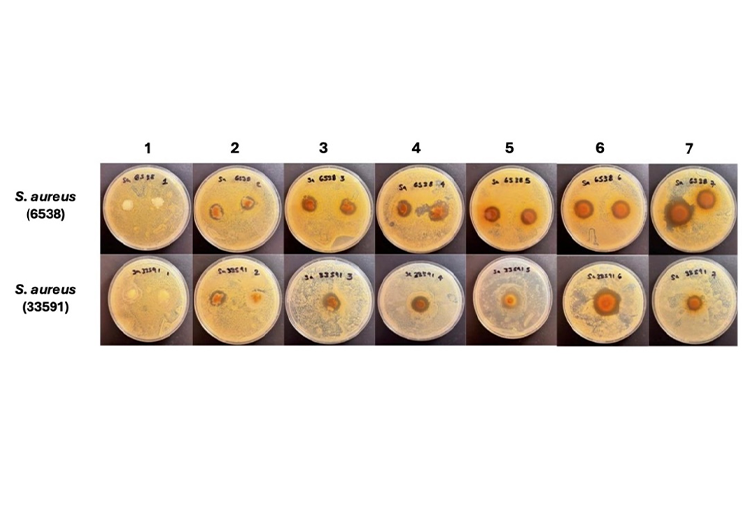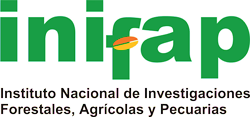Desarrollo de talco antibacterial a partir de almidón residual enriquecido con Larrea Tridentata
DOI:
https://doi.org/10.29312/remexca.v16i30.4050Palabras clave:
Larrea tridentata, gobernadora, talco antibacterialResumen
La Larrea tridentata, comúnmente conocida como ‘gobernadora’ o ‘creosota’ es una planta endémica de la familia Zygophyllaceae muy abundante en el norte de México. Debido a su toxicidad sus derivados no tienen muchos usos en materiales con contacto humano, por lo que, en busca de nuevas aplicaciones, la investigación se desarrolló en 2024. El trabajo se enfocó en realizar un proceso para extraer y procesar gobernadora y almidón de papa residual de la región sureste de Coahuila, en el norte de México para obtener un talco antibacterial. El producto obtenido mediante un proceso de molienda y mezclado fue caracterizado por espectrometría infrarroja, análisis termogravimétrico, se realizó una prueba de hemólisis para conocer su compatibilidad con la sangre humana y se probó sus propiedades antibacteriales mediante pruebas de antibiograma con cepas Gram-positivas de S. aureus (ATCC 6538 y ATCC 33591) obteniéndose un producto con aplicaciones como talco antibacterial por sus propiedades absorbentes de humedad, antibacteriales y de biocompatibilidad con eritrocitos de sangre humana.
Descargas
Citas
ASTM F756-08. 2017. American society for testing and materials. Standard practice for assement of hemolytic properties of materials.
Bamidele, M. O.; Sandoval-Cortés, J.; Flores-López, M. L.; Pérez, O. B. Á.; González, M. L. C. and Aguilar, C. N. 2024. Bioactive compounds recover from Larrea tridentata by green ultrasound-assisted extraction. Phyton-International Journal of Experimental Botany. 93(11):3091-3107. https://doi.org/10.32604/phyton.2024.058422.
Casey, R.; Larkin, T. P. and ley, E. 2025. Ovarian Cancer and “Tainted Talc”: What Treating Physicians Need to Know.Missouri Medicine, 116(2): 83-86. PMID: 31040485.
Chaudhary, N.; Arif, M.; Shafi, S.; Kushwaha, S. P. and Soni, P. 2025. Emerging role of natural bioactive compounds in navigating the future of liver disease. In iLIVER. 4(1):100140. https://doi.org/10.1016/j.iliver.2024.100140.
García-Inzunza, R.; Valdez-Salas, B.; Schorr-Wiener, M.; Carrillo-Beltran, M.; Zlatev-Koytchev, R.; Stoytcheva-Stilianova, M.; Ramos-rigoyen, R.; Vargas-Osuna, L. y Terrazas-Gaynor, J. 2013. Aqueous extract of creosote bush (Larrea tridentata) leaves as green inhibitor for carbon steel in hydrochloric acid solution. International Journal of Electrochemical Science. 8(5): 6433-6448.
Hernández, E. A.; Arango, G. C.; Reyes, P. A.; Martínez, S. P.; Pita de la, P. C.; Macías, M. S.; Arias, P. A. and Breña, N. J. 2016. Water supply source evaluation in unmanaged aquifer recharge zones: The Mezquital Valley (México) case study. Water. 9(4):256-271.
Hernández-Zamudio, G.; Sáenz-Mata, J.; Moreno-Reséndez, A.; Castañeda-Gaytán, G.; Ogaz, A.; Carballar-Hernández, S. and Hernández-Cuevas, L. 2018. Temporal diversity dynamics of the arbuscular mycorrhizal fungi of Larrea tridentata (Sesse y Mocino ex DC) Coville in a semi-arid ecosystem. Revista Argentina de Microbiologia. 50(3):301-310. https://doi.org/10.1016/j.ram.2017.07.007.
Izquierdo, V. J. A.; Sánchez, G. M.; Peña, L. C. S.; Martínez, A. M. and Razo, L. M. 2022. Arsenic and fluoride in the drinking water in Tula City, México: challenges and lessons learned. Water Air Soil Pollut. 233(200):453-564. https://doi.org/10.1007/s11270-022-05674-x.
Jitsuno, M. and Mimaki, Y. 2010. Triterpene glycosides from the aerial parts of Larrea tridentata. Phytochemistry. 71(17–18):2157-2167. https://doi.org/10.1016/j.phytochem.2010.09.012.
Lambert, J. D.; Sang, S.; Dougherty, A.; Caldwell, C. G.; Meyers, R. O.; Dorr, R. T. and Timmermann, B. N. 2005. Cytotoxic lignans from Larrea tridentata. Phytochemistry. 66(7):811-815. https://doi.org/10.1016/j.phytochem.2005.02.007.
Lira-Saldívar, R. H. 2003. Estado actual del conocimiento sobre las propiedades biocidas de la gobernadora [Larrea tridentata (D. C.) Coville]. Revista Mexicana de Fitopatología. 21(2):214-222. http://www.redalyc.org/articulo.oa?id=61221217.
Martins, S.; Aguilar, C. N.; Teixeira, J. A. and Mussatto, S. I. 2012. Bioactive compounds (phytoestrogens) recover from Larrea tridentata leaves by solvents extraction. Separation and Purification Technology. 88(1):163-167. https://doi.org/10.1016/j.seppur.2011.12.020.
Martins, S.; Amorim, E. L. C.; Sobrinho, T. J. S. P.; Saraiva, A. M.; Pisciottano, M. N. C.; Aguilar, C. N.; Teixeira, J. A. and Mussatto, S. I. 2013. Antibacterial activity of crude methanolic extract and fractions obtained from Larrea tridentata leaves. Industrial Crops and Products. 41(1):306-311. https://doi.org/10.1016/j.indcrop.2012.04.037.
Núñez-Mojica, G.; Vázquez-Ramírez, A. L.; García, A.; Rivas-Galindo, V. M.; Garza-González, E.; González-Bravo, G. E.; Toscano, R. A.; Moo-Puc, R. E.; Villanueva-Toledo, J. R.; Marchand, P. and Camacho-Corona, M. R. 2021. New cyclolignans of Larrea tridentata and their antibacterial and cytotoxic activities. Phytochemistry Letters. 43(1):212-218. https://doi.org/10.1016/j.phytol.2021.04.013.
Osorio, E.; Flores, M.; Hernández, D.; Ventura, J.; Rodríguez, R. and Aguilar, C. N. 2010. Biological efficiency of polyphenolic extracts from pecan nuts shell (Carya Illinoensis), pomegranate husk (Punica granatum) and creosote bush leaves (Larrea tridentata Cov.) against plant pathogenic fungi. Industrial Crops and Products. 31(1):153-157. https://doi.org/10.1016/j.indcrop.2009.09.017.
Schmidt, T. J.; Rzeppa, S.; Kaiser, M. and Brun, R. 2012. Larrea tridentata - absolute configuration of its epoxylignans and investigations on its antiprotozoal activity. Phytochemistry Letters. 5(3):632-638. https://doi.org/10.1016/j.phytol.2012.06.011.
Sosa-Santillán, G. J.; Zugasti-Cruz, A.; Enríquez-Medrano, F. J.; Avérous, L.; Pollet, E.; Valdés-Ramos, K. G.; Gomez, C. G.; Romero, M. R.; García-Lobato, M. A.; Pérez-Aguilar, N. V. and Oyervides-Muñoz, E. 2022. Synthesis, characterization, and antibacterial activities of novel starch derivatives against E. coli and S. aureus. Starch/Staerke. 74(7-8):2100142 https://doi.org/10.1002/star.202100142.
Valdez-Valdés, M. F.; Enríquez-Medrano, F. J.; Zugasti-Cruz, A.; Sierra-Rivera, C. A.; Martínez-Mora, E. I.; Sosa-Santillán, G. J. and Oyervides-Muñoz, E. 2024. Preparation of a starch derivative bearing chloroaniline groups and the evaluation of its hemolytic, cytotoxic and antibacterial activities. Polymer International. 74(1):46-53. https://doi.org/10.1002/pi.6689.
Vassão, D. G.; Kim, S. J.; Milhollan, J. K.; Eichinger, D.; Davin, L. B. and Lewis, N. G. 2007. A pinoresinol-lariciresinol reductase homologue from the creosote bush (Larrea tridentata) catalyzes the efficient in vitro conversion of p-coumaryl/coniferyl alcohol esters into the allylphenols chavicol/eugenol, but not the propenylphenols p-anol/isoeugenol. Archives of Biochemistry and Biophysics. 465(1):209-218. https://doi.org/10.1016/j.abb.2007.06.002.

Descargas
Publicado
Cómo citar
Número
Sección
Licencia
Derechos de autor 2025 Revista Mexicana de Ciencias Agrícolas

Esta obra está bajo una licencia internacional Creative Commons Atribución-NoComercial 4.0.
Los autores(as) que publiquen en Revista Mexicana de Ciencias Agrícolas aceptan las siguientes condiciones:
De acuerdo con la legislación de derechos de autor, Revista Mexicana de Ciencias Agrícolas reconoce y respeta el derecho moral de los autores(as), así como la titularidad del derecho patrimonial, el cual será cedido a la revista para su difusión en acceso abierto.
Los autores(as) deben de pagar una cuota por recepción de artículos antes de pasar por dictamen editorial. En caso de que la colaboración sea aceptada, el autor debe de parar la traducción de su texto al inglés.
Todos los textos publicados por Revista Mexicana de Ciencias Agrícolas -sin excepción- se distribuyen amparados bajo la licencia Creative Commons 4.0 atribución-no comercial (CC BY-NC 4.0 internacional), que permite a terceros utilizar lo publicado siempre que mencionen la autoría del trabajo y a la primera publicación en esta revista.
Los autores/as pueden realizar otros acuerdos contractuales independientes y adicionales para la distribución no exclusiva de la versión del artículo publicado en Revista Mexicana de Ciencias Agrícolas (por ejemplo incluirlo en un repositorio institucional o darlo a conocer en otros medios en papel o electrónicos) siempre que indique clara y explícitamente que el trabajo se publicó por primera vez en Revista Mexicana de Ciencias Agrícolas.
Para todo lo anterior, los autores(as) deben remitir el formato de carta-cesión de la propiedad de los derechos de la primera publicación debidamente requisitado y firmado por los autores(as). Este formato debe ser remitido en archivo PDF al correo: revista_atm@yahoo.com.mx; revistaagricola@inifap.gob.mx.
Esta obra está bajo una licencia de Creative Commons Reconocimiento-No Comercial 4.0 Internacional.


